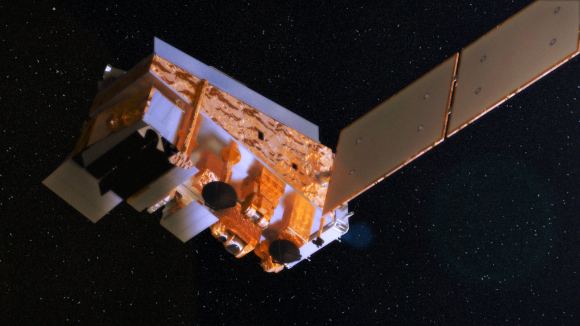By Ralph Crewe
You’ve probably seen stunning images of the night side of the Earth from space. Most people have seen the veritable constellations of city lights scattered familiarly across the continents, separated by wide oceans of darkness. You very well may have seen some stunning videos from the ISS showing the dynamic and mesmerizing ribbons of the polar aurorae and the even more frenetic flashes of nighttime lightning storms. If you’re a frequent reader of this site, you’ve likely even seen the effects of rolling blackouts during the catastrophic winter storms of February 2021 in Houston, as seen from space. Add another explosively extraordinary phenomenon to the list of nighttime space views; the March 2021 volcanic eruption in Iceland!.
A shield volcano in Iceland named Mount Fagradalsfall began erupting after centuries of dormancy in mid-March. The precise location of the eruption is in an adjacent valley known as Geldingadalur valley. The area can be seen as a new bright spot in the southwest of the North Atlantic island. The brilliant vulcanism seems nearly as bright as Reykjavik, some fifty kilometers to the northeast.


The nighttime images released by NASA’s Earth Observatory are comprised of data from the Visible Infrared Imaging Radiometer Suite (VIIRS). Flying aboard the Suomi NPP satellite mission VIIRS collects light in both the visible and infrared portions of the electromagnetic spectrum.
Another orbital view offers a more detailed, close-up view of the eruption. The Operational Land Imager (OLI) aboard Landsat 8 shows a Tolkienesque view of the Icelandic eruption in infrared.

While these images are enthralling, there’s no need to be alarmed or feel anxiety for the citizens of Iceland at this time. Shield volcanoes (Kilauea in Hawaii is a famous example) are not violently explosive. While they can produce copious amounts of lava and eruptions may last for years, they are relatively predictable and, at least in terms of volcanoes, peaceful.

These unprecedented views of the eruption seen by various space-based, Earth-focused observatories are stunning. The progress that science has made in understanding the planet is awe-inspiring. The theory of plate tectonics, which explains Iceland’s famous geological activity, was only widely accepted in the 1960s! To advance from not understanding the basic activities of the Earth’s crust to having multiple satellites producing fine resolution observations while traveling nearly ten kilometers per second in space is mind-blowing. Should you find yourself approached by someone who doubts space programs’ importance, remind them that we gain extraordinary insight into our homeworld thanks to those programs. Life on Earth is immeasurably improved thanks to programs like VIIRS and OMI, among others. Also, come on, what’s cooler than watching an ancient Icelandic volcano erupt from outer space at night?
Leading Image: Comparison of VIIRS images of Iceland before and during the eruption. Credit: Joshua Stevens and NASA Earth Observatory
Follow Ralph Crewe on Twitter @RalphCrewe
Watch Ralph Crewe explore unusual and interesting topics on YouTube
MORE
The post Seen From Space, Iceland’s new Volcano Lights up the Island at Night appeared first on Universe Today.

April 1, 2021 at 05:58AM
via Universe Today read more...

0 Comments